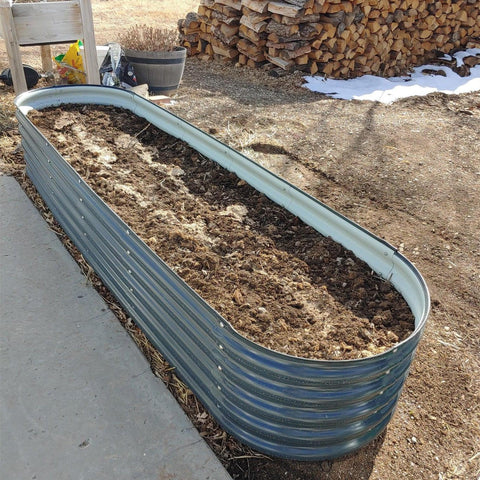The tips from Olle Garden Beds: 8 Tips for Growing Carrots in Garden Beds
Carrots are not just a tasty addition to salads and dishes, but also a rewarding vegetable to grow in your Garden beds. With their vibrant colors and crisp textures, homegrown carrots offer a taste of freshness that store-bought ones simply can't match. Whether you're a novice gardener or an experienced horticulturist, these 8 tips will help you master the art of growing carrots in your garden beds.
1.Choose the Right Variety:
Selecting the right carrot variety is crucial for successful growth. Choose a variety that suits your climate, soil type, and desired harvest time. Common choices include Nantes, Danvers, and Imperator types.
2.Prepare the Soil:
Carrots thrive in loose, well-draining soil. Remove rocks and debris that could hinder their growth. Amend heavy clay soil with compost or sand to improve drainage and create a loose texture that allows carrots to grow straight.
3.Sow at the Right Time:
Timing is key. Carrots prefer cool weather, so sow the seeds in early spring or late summer for a fall harvest. Aim for a soil temperature of around 50-60°F (10-15°C) for optimal germination.
4.Proper Seed Sowing:
Carrot seeds are tiny, which makes spacing and sowing them properly important. Create shallow furrows about 1/4 to 1/2 inch deep and space the seeds according to the variety's recommendations. Cover them lightly with soil and pat gently to ensure good seed-to-soil contact.

5.Thin Seedlings Carefully:
Once the seedlings emerge, thin them to prevent overcrowding. Overcrowded plants can result in small, twisted carrots. Aim for about 2 inches of spacing between each seedling to allow room for growth.
6.Adequate Watering:
Carrots need consistent moisture, especially during the germination phase. Use a gentle mist or a soaker hose to prevent displacing the seeds. As the plants grow, maintain a regular watering schedule, aiming to keep the soil consistently moist but not waterlogged.
7.Mulching and Weed Control:
Applying a layer of organic mulch, such as straw or wood chips, helps retain moisture, regulate soil temperature, and prevent weed growth. Keep the area around your carrot plants weed-free to avoid competition for nutrients.
8.Careful Harvesting:
Carrots are typically ready for harvest 60-80 days after planting, depending on the variety. Gently loosen the soil around the carrot before pulling it out. Don't force them out if they're stuck; this could result in breakage. Harvest carrots in the morning or late afternoon to prevent wilting.
Bonus Tip: Mind Your Companions:
Consider planting carrots alongside companion plants like onions, leeks, and radishes. These plants can help deter pests and provide mutual benefits, enhancing your carrot-growing success.
Growing carrots in your garden beds is a gratifying experience that yields not only delicious and nutritious produce but also a sense of accomplishment. By following these 8 tips, from choosing the right variety to mastering the art of thinning and harvesting, you'll be well on your way to enjoying a bountiful harvest of crisp, homegrown carrots. So, roll up your sleeves, get your gardening tools ready, and prepare for a season of cultivating crunchiness in your very own garden beds.
